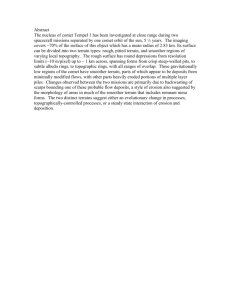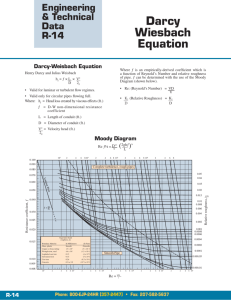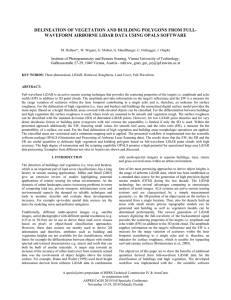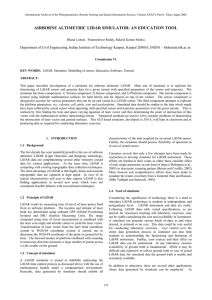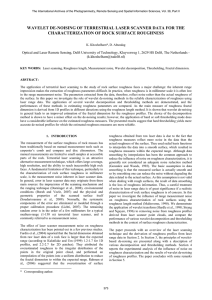TERRAIN ROUGHNESS PARAMETERS FROM FULL-WAVEFORM AIRBORNE LIDAR DATA
advertisement
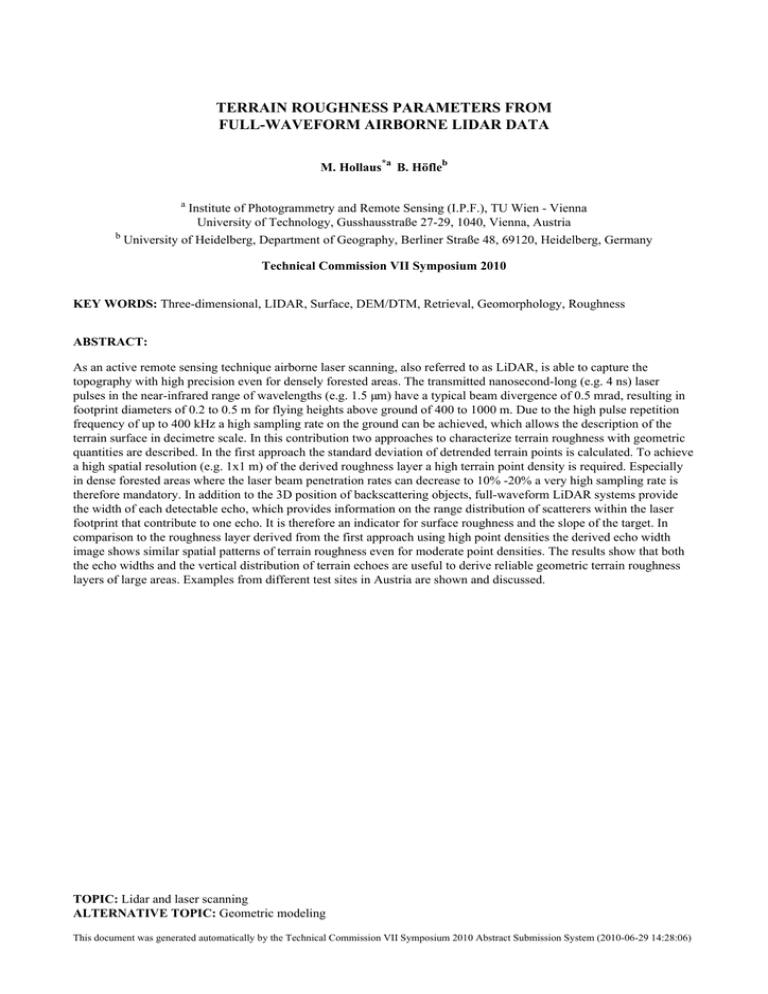
TERRAIN ROUGHNESS PARAMETERS FROM FULL-WAVEFORM AIRBORNE LIDAR DATA M. Hollaus*a B. Höfleb a Institute of Photogrammetry and Remote Sensing (I.P.F.), TU Wien - Vienna University of Technology, Gusshausstraße 27-29, 1040, Vienna, Austria b University of Heidelberg, Department of Geography, Berliner Straße 48, 69120, Heidelberg, Germany Technical Commission VII Symposium 2010 KEY WORDS: Three-dimensional, LIDAR, Surface, DEM/DTM, Retrieval, Geomorphology, Roughness ABSTRACT: As an active remote sensing technique airborne laser scanning, also referred to as LiDAR, is able to capture the topography with high precision even for densely forested areas. The transmitted nanosecond-long (e.g. 4 ns) laser pulses in the near-infrared range of wavelengths (e.g. 1.5 µm) have a typical beam divergence of 0.5 mrad, resulting in footprint diameters of 0.2 to 0.5 m for flying heights above ground of 400 to 1000 m. Due to the high pulse repetition frequency of up to 400 kHz a high sampling rate on the ground can be achieved, which allows the description of the terrain surface in decimetre scale. In this contribution two approaches to characterize terrain roughness with geometric quantities are described. In the first approach the standard deviation of detrended terrain points is calculated. To achieve a high spatial resolution (e.g. 1x1 m) of the derived roughness layer a high terrain point density is required. Especially in dense forested areas where the laser beam penetration rates can decrease to 10% -20% a very high sampling rate is therefore mandatory. In addition to the 3D position of backscattering objects, full-waveform LiDAR systems provide the width of each detectable echo, which provides information on the range distribution of scatterers within the laser footprint that contribute to one echo. It is therefore an indicator for surface roughness and the slope of the target. In comparison to the roughness layer derived from the first approach using high point densities the derived echo width image shows similar spatial patterns of terrain roughness even for moderate point densities. The results show that both the echo widths and the vertical distribution of terrain echoes are useful to derive reliable geometric terrain roughness layers of large areas. Examples from different test sites in Austria are shown and discussed. TOPIC: Lidar and laser scanning ALTERNATIVE TOPIC: Geometric modeling This document was generated automatically by the Technical Commission VII Symposium 2010 Abstract Submission System (2010-06-29 14:28:06)


